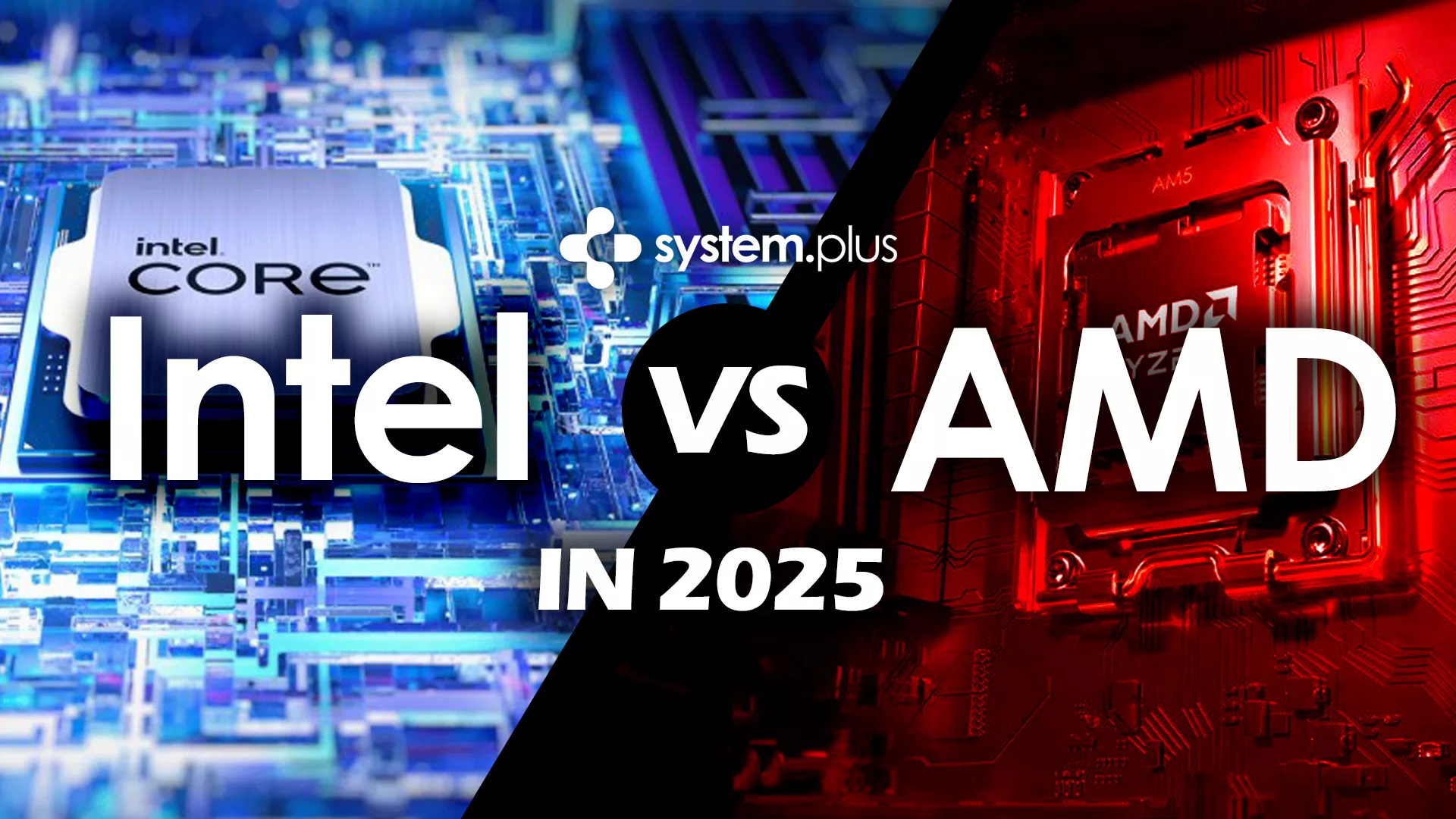AMD vs Intel: Which Is Better for Creators Right Now?
AMD vs Intel: Which Is Better for Creators Right Now?
In 2025, content creation is no longer limited to a small group of video editors and designers. From YouTubers editing 4K videos and gamers streaming live on Twitch to animators, photographers, and even AI artists—creators are everywhere. And at the heart of any creator’s workflow lies one critical component: the CPU.
When building or upgrading a workstation, the age-old question arises again—AMD or Intel? While both companies offer powerful options for creators, the best choice depends on your specific needs, the software you use, and your budget.
This guide compares AMD and Intel across key creative workloads—like video editing, 3D rendering, photo editing, and multitasking—to help you decide which is the better CPU platform for creators in 2025.
The Creator’s CPU Dilemma in 2025
Before we jump into benchmarks and specs, it’s important to understand what creators need from a CPU. Unlike gamers, who prioritize single-core performance for high FPS, content creators often need:
-
High multi-core performance for video rendering and multitasking
-
Strong integrated graphics (for light editing or backup workflows)
-
Platform features like PCIe 5.0, DDR5, and Thunderbolt/USB4
-
Thermal efficiency and power consumption
-
Software optimization (Adobe, DaVinci Resolve, Blender, etc.)
Both AMD and Intel have made major strides in these areas. But who leads the race right now?
AMD in 2025: Ryzen 7000 & Threadripper Power
AMD’s current mainstream desktop platform is the Ryzen 7000 series, built on the Zen 4 architecture. From the entry-level Ryzen 5 7600 to the powerful Ryzen 9 7950X, AMD has built a full stack of creator-friendly CPUs.
For professionals with deeper pockets, AMD’s Threadripper 7000 (Pro) lineup is unmatched in multi-threaded workloads. These chips are essentially multi-core beasts, ideal for 3D animation, video production, and scientific computing.
Key AMD Creator CPUs (2025):
-
Ryzen 9 7950X (16 cores / 32 threads)
-
Ryzen 9 7900X (12 cores / 24 threads)
-
Ryzen 7 7700X (8 cores / 16 threads)
-
Threadripper Pro 7995WX (96 cores / 192 threads)
Advantages for Creators:
-
Outstanding multi-core performance
-
PCIe 5.0 & DDR5 support across the board
-
Cooler and more power-efficient than older AMD chips
-
Compatible with AM5 motherboards (longer-term upgrade path)
Downsides:
-
No onboard graphics on many chips (need discrete GPU)
-
High-end AM5 motherboards can be expensive
Intel in 2025: 14th Gen & Meteor Lake (Mobile)
Intel’s current desktop champion is the 14th Gen Raptor Lake Refresh, including the i5-14600K, i7-14700K, and i9-14900K. These chips offer hybrid core architecture, combining Performance (P) cores and Efficient (E) cores for optimized multitasking.
On the mobile side, Intel has introduced Meteor Lake CPUs, using chiplet-based design and built-in NPUs for AI acceleration—an increasingly important feature for creators using Adobe’s AI tools or AI-powered editing software.
Key Intel Creator CPUs (2025):
-
Intel Core i9-14900K (24 cores: 8P + 16E)
-
Intel Core i7-14700K (20 cores: 8P + 12E)
-
Intel Core i5-14600K (14 cores: 6P + 8E)
-
Meteor Lake Mobile i7-155H (with integrated Arc GPU)
Advantages for Creators:
-
Excellent hybrid architecture for multitasking
-
Onboard graphics (Intel UHD or Arc) available in most SKUs
-
Better QuickSync video encoding (especially for H.264/H.265)
-
Thunderbolt 4 and USB4 support
Downsides:
-
Higher power consumption at peak loads
-
Hotter CPUs—requires better cooling solutions
-
Fewer cores vs AMD at the top-end price range
Performance Showdown: Real-World Workflows
Let’s compare AMD and Intel in popular creative apps.
1. Video Editing (Adobe Premiere Pro, DaVinci Resolve)
-
Intel performs very well thanks to QuickSync, which accelerates export and playback of H.264/HEVC content.
-
AMD wins in raw rendering power, especially with the Ryzen 9 7950X and Threadrippers in high-resolution projects.
Verdict: Intel has the edge in casual/fast editing; AMD wins in high-end production rendering.
2. 3D Rendering (Blender, Autodesk Maya, Cinema 4D)
-
AMD’s superior core count in chips like the 7900X and 7950X gives it an advantage in Blender’s Cycles rendering.
-
Intel’s 14900K is no slouch but falls behind in extended workloads.
Verdict: AMD is the go-to for 3D rendering workloads.
3. Photo Editing (Adobe Photoshop, Lightroom)
-
Both AMD and Intel perform similarly, but Intel’s higher clock speeds give it a slight edge in image loading and filter performance.
Verdict: Tie, with Intel slightly ahead in Photoshop.
4. Streaming & Multitasking
-
Intel’s hybrid architecture really shines here. Background encoding + live recording + gameplay = smooth experience.
-
AMD is also solid but can occasionally struggle if tasks aren’t heavily multi-threaded.
Verdict: Intel wins for multitasking-heavy streamers.
5. AI-Assisted Workloads (Adobe Firefly, Topaz AI, Runway)
-
Intel’s Meteor Lake mobile CPUs with NPUs are optimized for AI features.
-
AMD is still catching up in integrated AI acceleration.
Verdict: Intel leads in emerging AI-enhanced creative apps (but gap is closing).
Power Efficiency and Thermals
Creators often run long sessions, and thermals matter. AMD’s Zen 4 chips are built on TSMC’s 5nm process, making them more power-efficient than Intel’s 14th Gen chips, which are still based on Intel 7.
Intel’s i9-14900K can draw over 250W under load, requiring top-tier cooling. AMD’s 7950X, on the other hand, stays within a more manageable range (170-230W in most cases).
Winner: AMD, for energy-conscious creators and compact builds.
Platform and Upgrade Path
-
AMD’s AM5 socket is confirmed to be supported until at least 2027, meaning future CPU upgrades won’t require a new motherboard.
-
Intel, historically, changes socket platforms frequently. The 14th Gen may be the last on the LGA1700 platform, which can limit future upgrades.
Winner: AMD, with better future-proofing.
Pricing and Value
Both companies are competitive in terms of pricing in 2025. But AMD often delivers better multi-core performance per dollar, especially at the higher end.
Intel’s Core i5 and i7 chips offer great value for mid-range creators, especially if you don’t plan to upgrade soon or need integrated graphics.
Winner: Tie—AMD wins in high-end value; Intel wins in mid-range practicality.

Final Verdict: Which Is Better for Creators in 2025?
Both AMD and Intel offer fantastic options for creators in 2025. The better choice depends on your specific use case:
Choose AMD if:
-
You render a lot of 3D models or high-res video.
-
You want a future-proof upgrade path (AM5 socket).
-
You prefer energy-efficient systems.
-
You’re building a high-end workstation (Threadripper beats everything else).
Choose Intel if:
-
You do lots of quick video edits or need fast H.264 exports (QuickSync).
-
You stream or multitask heavily.
-
You want solid integrated graphics without a GPU.
-
You want excellent performance out of the box with minimal tuning.
In the end, both platforms are creator-ready. It’s less about which brand is “better” and more about which one fits your creative style, workflow, and budget.

With years of experience in technology and software, John leads our content strategy, ensuring high-quality and informative articles about Windows, system optimization, and software updates.












![7 Common Windows 10 Errors And How To Fix Them [2020] - TechDipper](https://windows12download.com/wp-content/uploads/2023/04/Windows-10-Errors-300x169.jpg)

Post Comment
You must be logged in to post a comment.